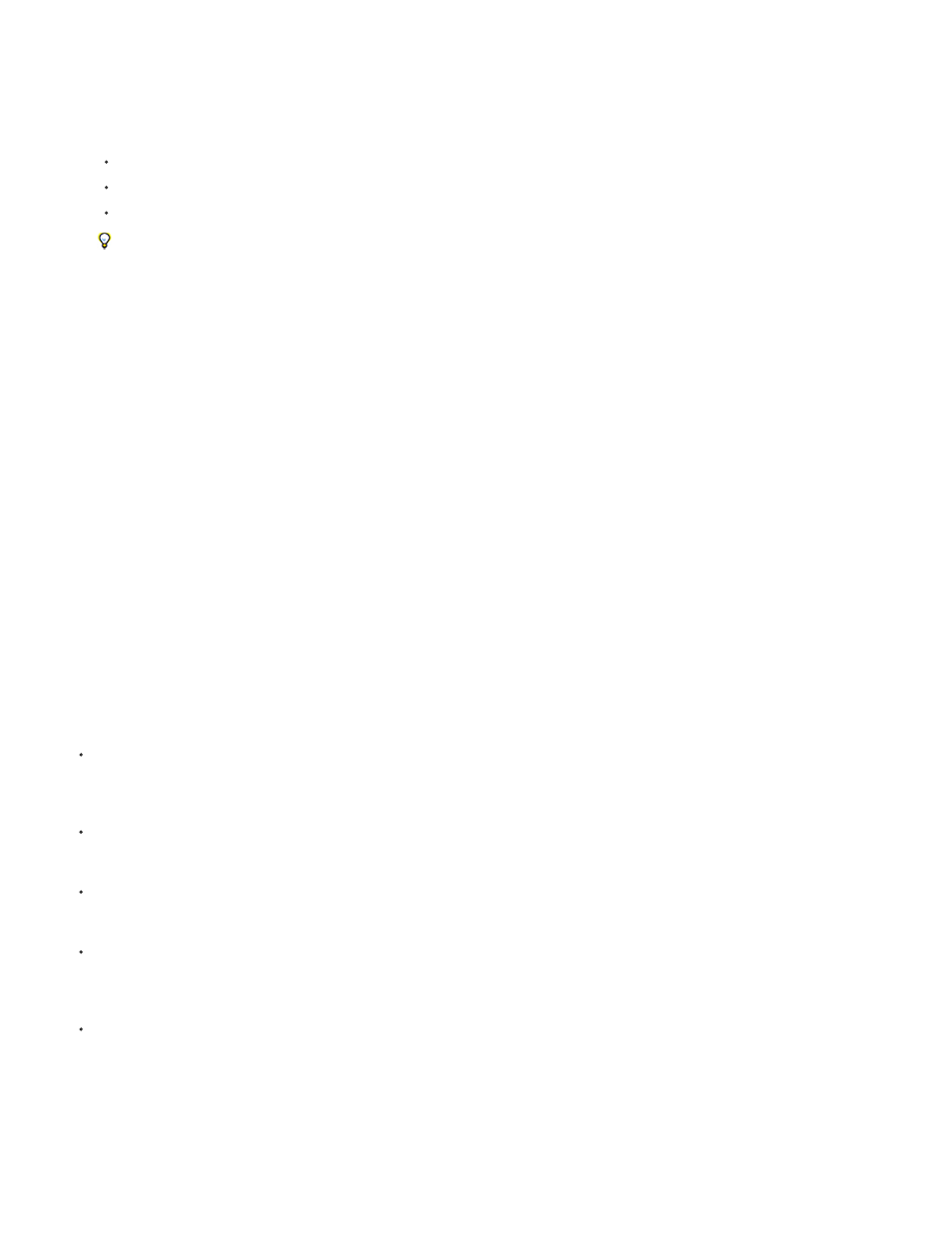Adobe After Effects User Manual
Page 241

Note:
Motion Source
Note:
Current Track
Track Type
Motion Target
After Effects creates keyframes for the target layer.
When tracking position and applying this position data to a target, you can choose to apply only the x (horizontal) or y (vertical) component
of motion. For example, you can apply the tracking data to the x axis to make a speech bubble (the motion target) remain at the top of the
frame even when the actor (the motion source) moves downward.
X And Y (default) allows motion along both axes.
X Only restricts the motion target to horizontal movement.
Y Only restricts the motion target to vertical movement.
To bypass the Motion Tracker Apply Options dialog box and use the previous setting, hold Alt (Windows) or Option (Mac OS) as you
click Apply.
You can change the order of steps 1-3 by first selecting the property to which to apply the tracking data (Scale, Position, or Rotation) and
then choosing Animation > Track This Property. After Effects prompts you to choose the layer to use as a motion source.
When you stabilize a layer, the compensating motion may itself cause the layer to move too far in one direction, exposing the background in the
composition or moving action out of the action-safe zone. You can correct this with a small change in scale for the layer. Find the frame where the
problem is most severe, and then increase or decrease the scale of the layer until the problem is resolved. This technique adjusts the scale for the
duration of the layer; you can also animate scale to correct this problem by zooming in and out at different times.
Motion tracking controls
You set up, initiate, and apply motion tracking with the Tracker panel.
The layer that contains the motion to track.
Layers are available in the Motion Source menu if they have source footage items that can contain motion or if they are composition layers.
You can precompose a layer to make it available in the Motion Source menu.
The active tracker. You can modify settings for a tracker at any time by selecting the tracker from this menu.
The tracking mode to use. The motion tracking itself is the same for each of these modes; they differ in the number of track points
and how the tracking data is applied to the target:
Stabilize tracks position, rotation, and/or scale to compensate for movement in the tracked (source) layer. When tracking position, this mode
creates one track point and generates Anchor Point keyframes for the source layer. When tracking rotation, this mode creates two track
points and produces Rotation keyframes for the source layer. When tracking scale, this mode creates two track points and produces Scale
keyframes for the source layer.
Transform tracks position, rotation, and/or scale to apply to another layer. When tracking position, this mode creates one track point on the
tracked layer and sets Position keyframes for the target. When tracking rotation, this mode creates two track points on the tracked layer and
sets Rotation keyframes for the target. When tracking scale, this mode creates two track points and produces Scale keyframes for the target.
Parallel Corner Pin tracks skew and rotation, but not perspective; parallel lines remain parallel, and relative distances are preserved. This
mode uses three track points in the Layer panel—and calculates the position of the fourth—and sets keyframes for four corner points in a
Corner Pin effect property group, which is added to the target. The four attach points mark the placement of the four corner points.
Perspective Corner Pin tracks skew, rotation, and perspective changes in the tracked layer. This mode uses four track points in the Layer
panel and sets keyframes for four corner points in a Corner Pin effect property group, which is added to the target. The four attach points
mark the placement of the four corner points. This option is useful for attaching an image to an opening door or the side of a bus that’s
turning a corner.
Raw tracks position only. Use Raw to generate tracking data that you won’t apply using the Apply button. For example, you can copy and
paste the keyframes for the Attach Point property to the Position property for a paint stroke; or, you can link effect properties for the Stereo
Mixer effect to the x coordinate of the Attach Point property using expressions. Tracking data is stored on the tracked layer. The Edit Target
button and the Apply button are not available with this tracking option. You can add track points to a tracker by choosing New Track Point
from the Tracker panel menu.
The layer or effect control point that the tracking data is applied to. After Effects adds properties and keyframes to the target to
move or stabilize it. Change the target by clicking Edit Target. No target is associated with a tracker if Raw is selected for Track Type.
237
